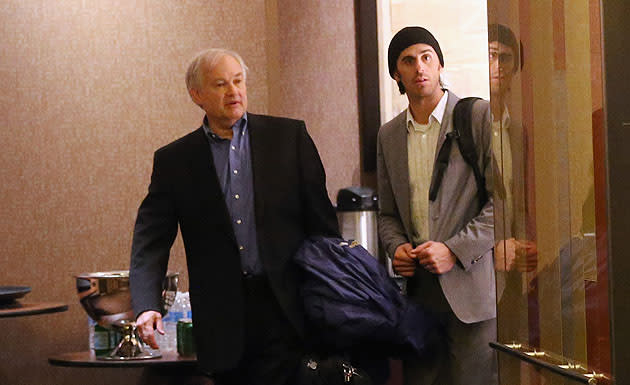NHLPA backed off money guarantees, suggested NBA-esque mid-level cap exception
Ah, the fine print.
Amid all the headline-grabbing stuff since NHL labor talks broke down Thursday -- "We're close!" "No, we're not!" -- lost were some of the details. And the devil is in the details.
Here are some key things that went unreported:
• The NHL Players' Association backed off on its proposal that the players' share could not go backwards in terms of dollars starting in Year 2. It had been a non-starter for the NHL.
Basically, under the players' previous proposal, their combined pay would drop in Year 1 as their percentage of hockey-related revenue dropped from 57 to 50. After that, their combined pay would never be less than the previous year, even if HRR went down.
Executive director Don Fehr said the players were making massive concessions and they wanted protection on the downside in exchange. But that would have penalized the NHL for a bad year -- or even a good year that followed a great year. Had HRR fallen for any reason, the players' percentage would have risen above 50.
The owners want a true 50-50 split after the make-whole/transition payments (which came off the table Thursday but could go back on, if and when talks resume this week.) That's why they are opposed to compliance buyouts and caps on escrow -- money outside the system.
• The NHLPA suggested a mid-level cap exception. The NHL told the union it was a non-starter. It is unclear whether it is still on the table.
I am not sure exactly how it would work. But I assume it would work something like the NBA's, though the NBA's is in a soft-cap system, and here is the philosophy:
The players accepted the idea of maximum contract lengths for the first time. They're at eight years; the owners are at five, while allowing teams to re-sign their own players for seven.
The players fear that if contract lengths are limited and the salary cap is lower, the stars will still make their money and that their money will take up a larger portion of teams' cap space. That will squeeze the middle class of players.
A mid-level cap exception would allow teams to go outside the cap to sign certain types of players, protecting the middle class. I am told the application of the rule would be "very limited."
But the owners don't like it. The mid-level exception inflated salaries in the NBA and led to bad contracts. This is not money outside the system, but this is still "cash over cap," which the NHL is fighting as it pushes to restrict contracting rules that govern back-diving contracts and burying players in the minors.
Even if salaries are inflated, the excess will be recouped by escrow. The players will receive only 50 percent of HRR as a group. If their salaries are too high, they won't get every dollar.
But the owners don't like cap circumvention. They don't want to give too much money to the wrong guys. And they don't buy the argument that stars will take up too much cap space, because a similar argument was made during the cap fight in 2004-05.
One more thing: Players' salaries are tied to league HRR, but individual teams have their own HRR. How the CBA applies at the local level is important, especially to struggling franchises.
• The sides did not discuss how the payroll range -- the salary cap and floor -- would be calculated.
Under the old agreement, the cap and floor were plus and minus $8 million from the midpoint. The players have proposed the cap start at $67.25 million and never go below that. They also have proposed the cap and floor be plus and minus 20 percent of the midpoint. That would widen the payroll range, allowing rich teams to spend more and poor teams to spend less.
The League has embraced the idea of setting the cap and floor on a percentage basis, but not at 20 percent. It does not want to widen the payroll range out of fear of upsetting competitive balance.
The owners would prefer the cap at $60 million for two years, then one they feel accurately reflects the 50-50 split. They don't want things like a cap on escrow, and they want what they feel would be effective rules addressing "cash over cap."
In short, whether you feel the sides are close or still far apart, we can all agree on this: They still have a lot more to discuss.


